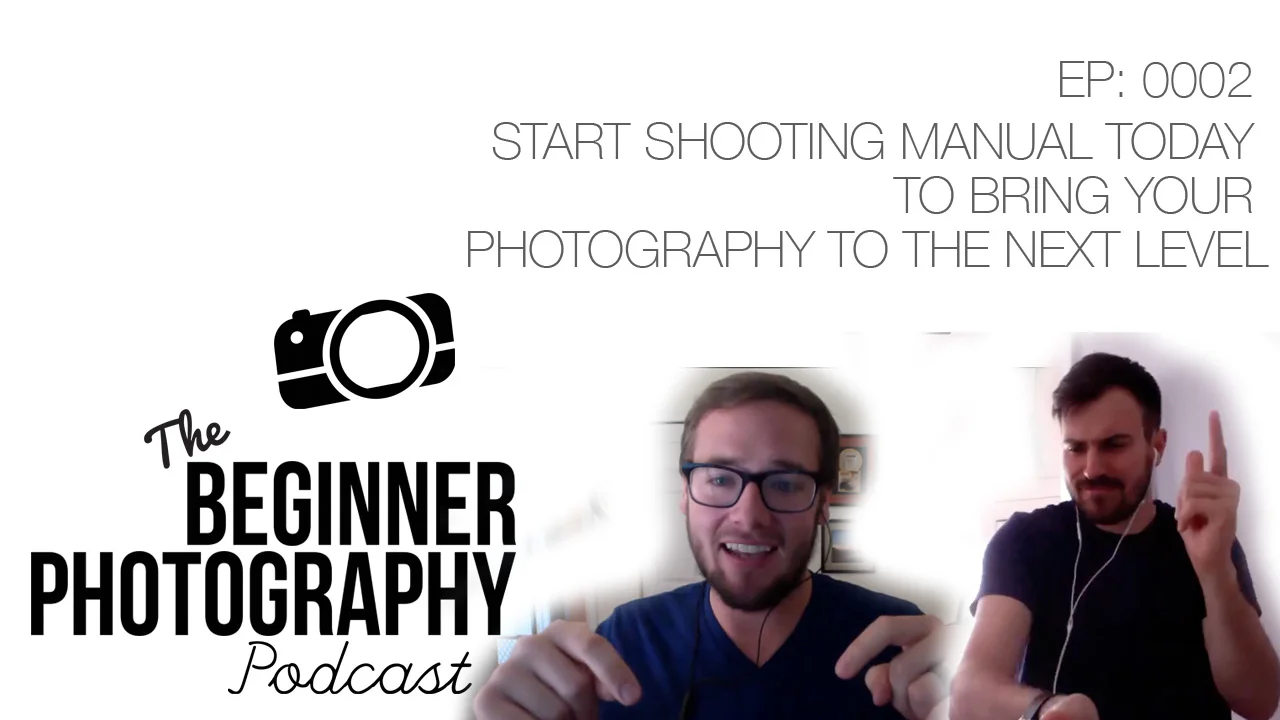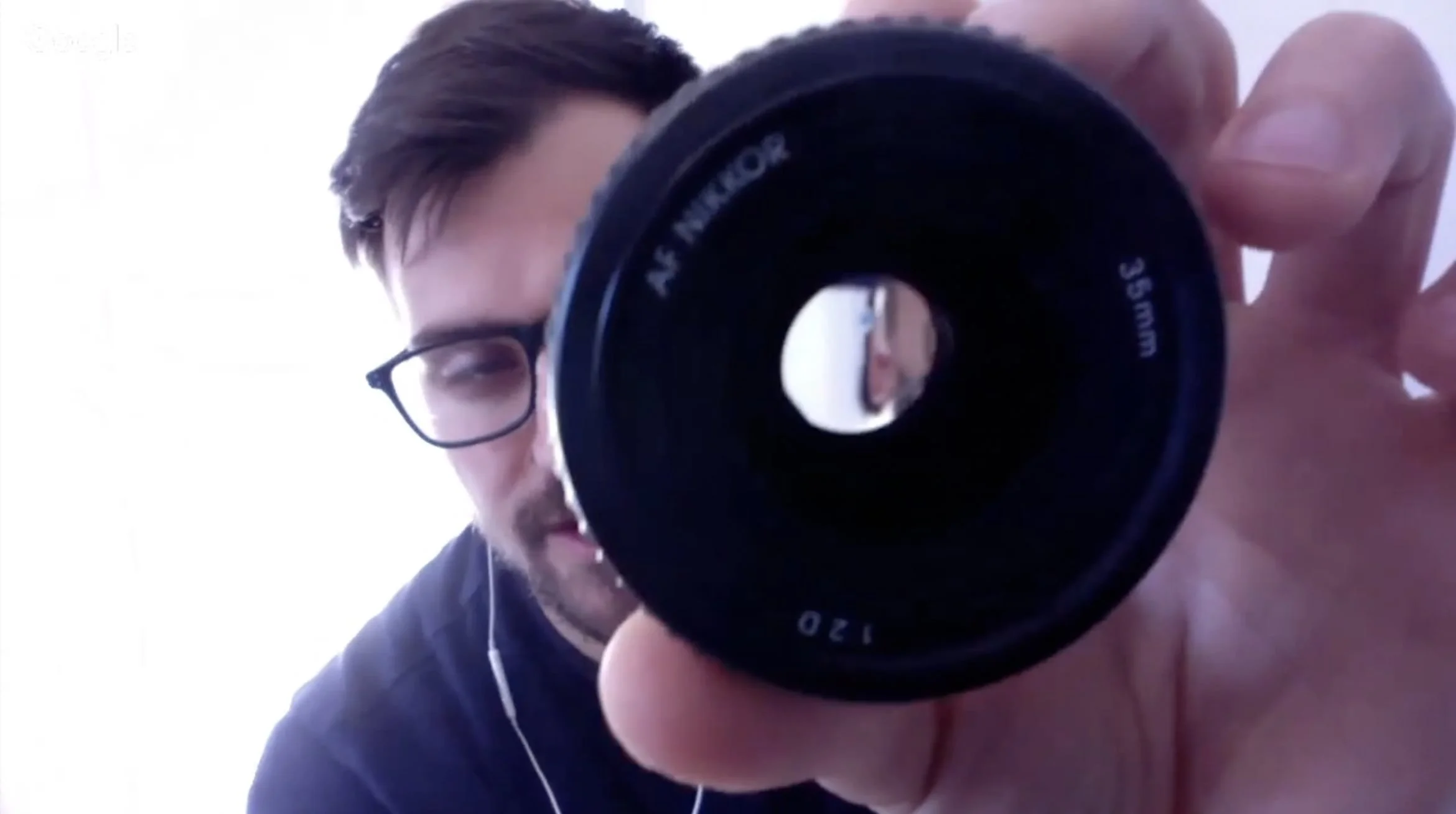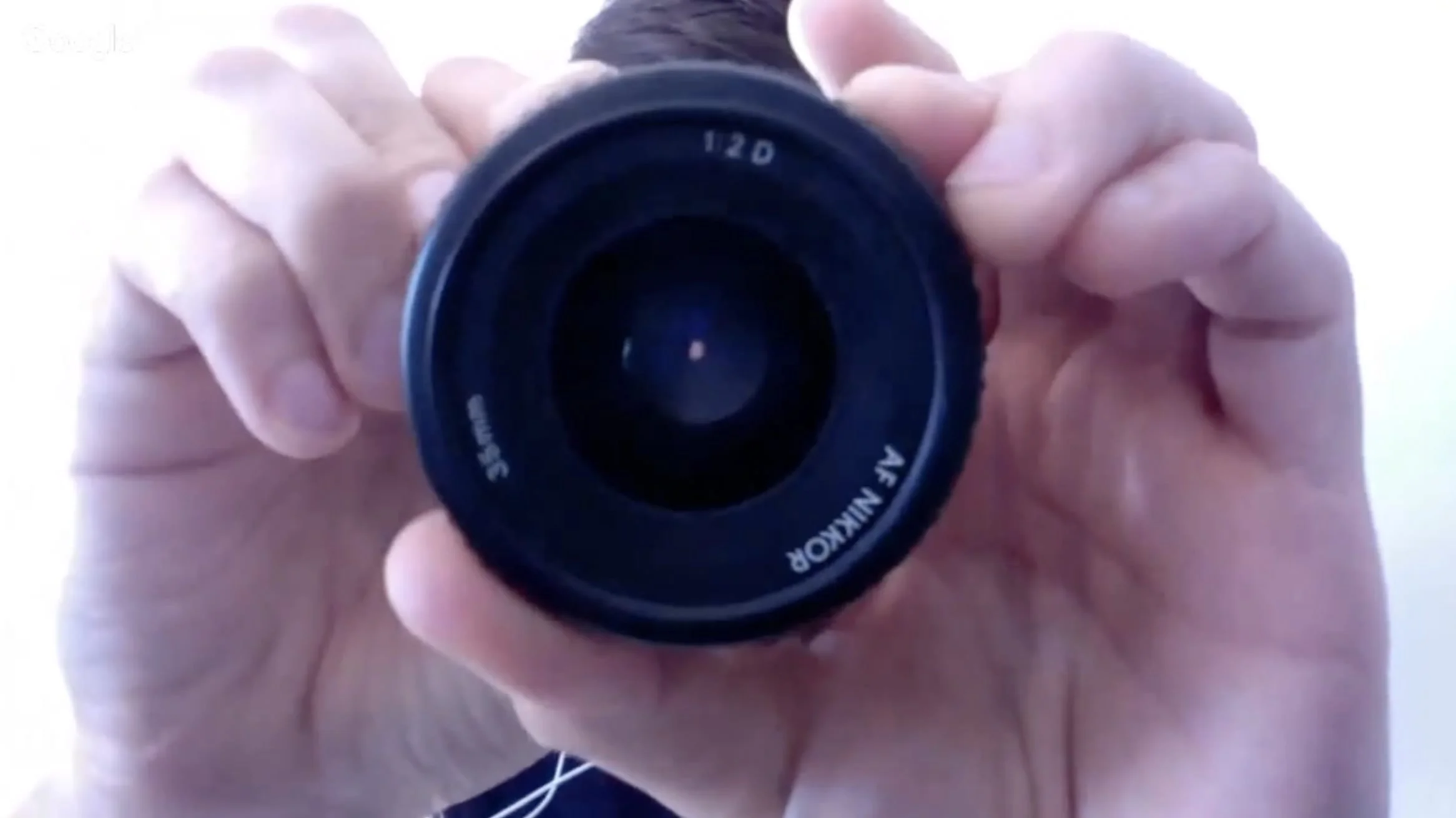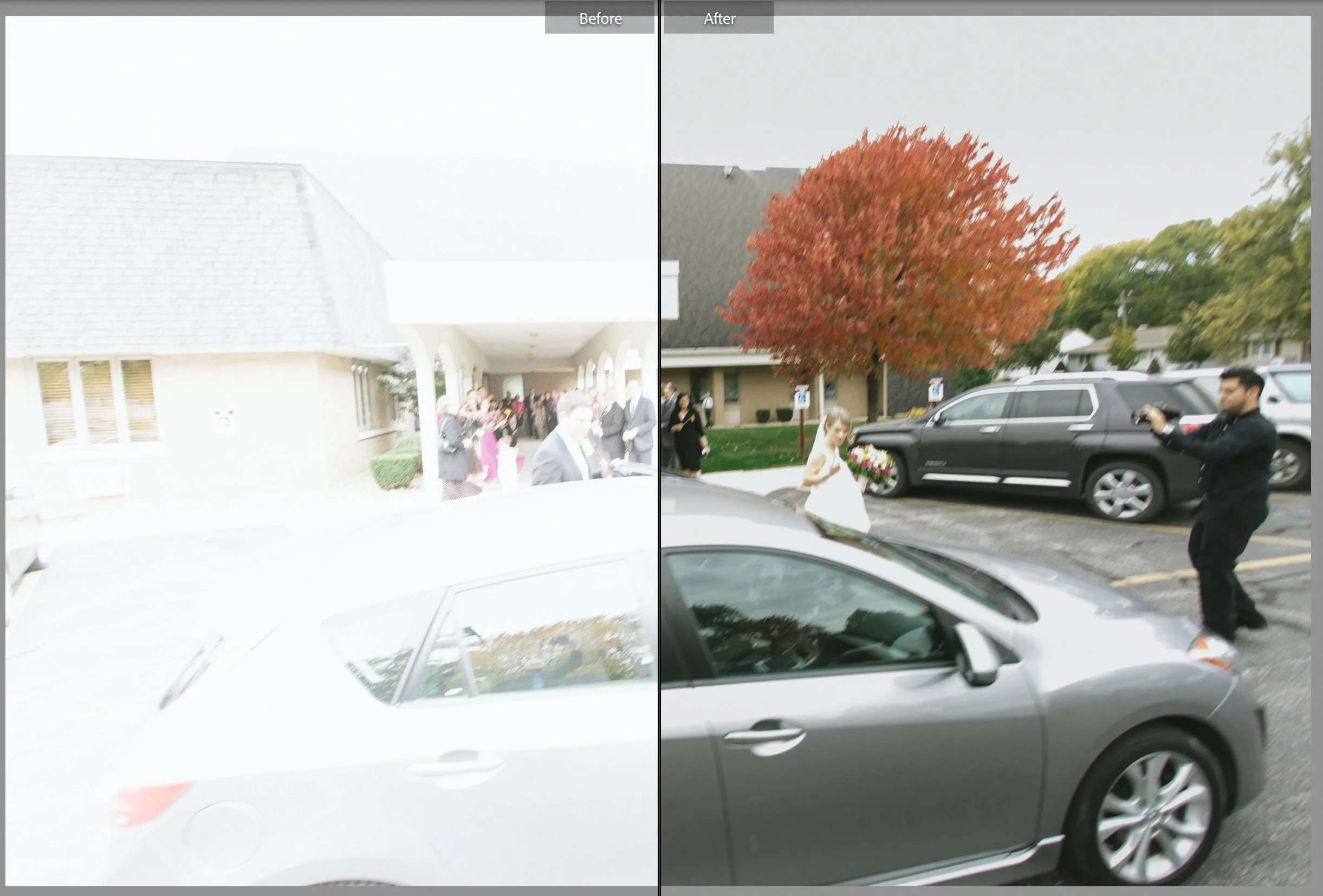EP: 002 Start Shooting Manual Today to Bring your Photography to the Next Level
Shooting in manual is the fastest way to stat getting better photos. When you are aware of your controls and what they do, you can really manipulate your image with much more precision than you can in your cameras other shooting modes. This is Episode 2 of the Beginner Photography Podcast
Raymond and Callum explore the importance of shooting manual in taking better photos and explain how it has helped them to take better images. They highlight the mindset of being positive and taking risks, feeding the body well for sharper focus, and making small adjustments that can lead to big differences in the photos.
In todays episode you will learn:
What manual shooting is
Why its different from the other shooting modes
The pros of shooting manual
The cons of shooting manual
What aperture means
What aspects of your camera you need to control
How to make shooting in manual less scary
How shooting manual gives you more creative control
How to change your settings to preplan for light
How shooting manual will save you time when editing
Time Stamps of the Big Ideas
00:03:11 Shoot manually for best results.
00:07:57 Control aperture for exposure.
00:17:44 Manual mode gives creative control.
00:23:08 Experience is key for photography.
00:30:54 Shoot in manual for faster editing.
00:32:02 Amazing photo from beginner gear.
00:43:19 Shoot in manual mode.
00:44:25 Practice and experiment.
Check out Reddit user /u/SharkDP photo. Its a great photo that took me by surprise.
[18mm, f/11, 1/1250, ISO 400]
We start the Instagram Hashtag #StopDown were we post our photos we take at aperture f8 or above.
A large aperture lets a lot of light through the lens
a small aperture lets little light though the lens
Before and After. Keeping my settings the same in a fast moving situation caused this image to be over exposed, but I was able to lower the exposure in Lightroom and save the image.
If you have any questions Feel free to email us today at
BeginnerPhotographyPodcast@gmail.com
Connect with us on Facebook!
www.facebook.com/beginnerphotographypodcast/
Shoot manual for control.
Shooting manual is a great way to take your photography to the next level. It gives you full control over the image you create and allows you to capture the exact image you want. Manual shooting is especially important for wedding photography, where you don’t know the flow of the day and can’t rely on the camera’s autofocus to get the right shot.
My own experience with manual shooting began in film sets, where everything is manual. On film sets, the cameras don’t even have autofocus, and the person responsible for changing the focus on the lens has a very difficult job. I learned to shoot manually and brought this skill set into photography.
However, when I started shooting weddings, I got scared and second-guessed myself. I switched to aperture priority to make sure I didn’t miss any shots, but I found that the tiny variations in my images weren’t to my liking. I realized that it was better to miss one shot than to have an entire wedding that wasn’t exactly as I wanted it to be.
My friend Callum had a similar experience when he was backpacking through Europe. He was shooting in aperture priority mode, and his camera would compensate for the light changes from sunny to dark shade. This resulted in images that weren’t what he wanted to capture, as the camera’s meter system couldn’t account for the changes.
Shooting manual is the only way to get full control over your images. You can choose the exact ISO, aperture, and shutter speed you want, and you don’t have to rely on the camera’s autofocus or meter system. It takes practice to master manual shooting, but the results are worth it. If you’re serious about your photography, you should be shooting manual today.
Control light with aperture setting.
One of the most important elements of manual shooting is controlling light with aperture setting. Aperture is the size of the hole in the lens that lets light into the camera. The size of this hole affects how much light is let in and how much depth of field you have. The larger the aperture, the more light is let in and the more shallow the depth of field. The smaller the aperture, the less light is let in and the more depth of field.
When shooting in aperture priority mode, you can choose the aperture setting you want and the camera will automatically adjust the shutter speed and ISO to get a proper exposure. This is great for when you want a shallow depth of field or a lot of light. However, if you want to underexpose or overexpose an image, you’ll need to manually adjust the shutter speed and ISO.
It’s important to understand how aperture affects your images and how to adjust it to get the results you want. You can use aperture to control the amount of light in your images and to create a shallow or deep depth of field. You can also use it to create a silhouette or to bring out more detail in the shadows.
Learning how to control light with aperture setting is an essential skill for any photographer. It takes practice to master manual shooting, but the results are worth it. With the right settings, you can create stunning images that you can be proud of.
Manual shooting gives creative control.
Manual shooting gives you the creative control to adjust the settings to get the exact look you want. Aperture priority mode is great for those starting out, as the camera will automatically adjust the shutter speed to compensate for the amount of light. However, manual mode allows you to fine-tune your settings to get the shot you desire.
For example, when shooting a wedding, you can use manual mode to ensure you get the perfect shot. If you are outside taking portraits, you can set your aperture to an F2 and the camera will adjust the shutter speed accordingly. However, if you are inside a dark church, you may need to lower your shutter speed to get the right exposure. With manual mode, you can adjust your settings to get the shot you want.
Manual shooting can be intimidating at first, but with practice you will learn how each setting affects the image. You will understand how the aperture, shutter speed, and ISO settings work together to create the perfect image. You will also learn how to adjust your settings quickly in case something unexpected happens.
Manual shooting gives you the creative control to take your photography to the next level. With practice, you will be able to create stunning images with the perfect exposure. You will also be able to adjust your settings quickly to capture those special moments that you don't want to miss. So, if you're looking to take your photography to the next level, give manual shooting a try.
Experience is key to success.
Experience is key to success in photography. As a photographer, you need to have the experience and knowledge to be able to take great photos. It is not enough to just have the latest and greatest gear. You need to know how to use it to its full potential.
For example, Raymond was able to predict the lighting conditions and prepare for the shots in the car. He was able to underexpose the photo by a stop and then bring it up two and two thirds of a stop to get the perfect exposure. This was only possible because he had the experience and knowledge to know how to use his camera to achieve the desired results.
It is also important to understand the basics of photography such as shutter speed, aperture, and ISO. Being able to adjust these settings quickly and accurately will help you take better photos. It is also important to know how to read a histogram and make the necessary adjustments to get the perfect exposure.
Finally, it is important to practice and experiment. Trial and error is the best way to learn. You can read all the books in the world about photography but until you actually take photos and adjust the settings, it won't make sense. Taking photos and experimenting with different settings is the best way to learn and become a better photographer.
In conclusion, experience is essential to success in photography. You need to have the knowledge and experience to be able to use the gear to its full potential. You also need to understand the basics of photography and practice and experiment to become a better photographer. With experience, you will be able to take stunning photos with the perfect exposure.
Shoot in manual mode.
For those who are just starting out in photography, shooting in manual mode is a great way to learn the basics of photography. Manual mode allows you to take full control of your camera and its settings. You can adjust the shutter speed, aperture, and ISO to get the perfect exposure for your photos. With manual mode, you can also experiment with different camera settings to see how they affect the final image.
Manual mode also allows you to take photos in any type of lighting condition. You can adjust the settings to get the perfect exposure for a bright sunny day or a dark and cloudy day. You can also adjust the settings to get the perfect exposure for indoor and outdoor photography. This is important because the type of lighting can drastically affect the final image.
Another benefit of shooting in manual mode is that it will save you time in post-processing. If you are shooting in the same light, you can apply the same settings to multiple photos and save time in post-processing. This can be especially helpful if you are shooting a wedding or event where you need to take multiple photos in the same light.
Overall, shooting in manual mode is a great way to learn the basics of photography and take control of your camera. With practice and experimentation, you will be able to take stunning photos and save time in post-processing. So, if you are just starting out in photography, give manual mode a try and see what amazing photos you can create.
Photography is an art form.
Photography is an art form that allows us to capture moments in time and express our creativity. It can be a powerful tool for conveying emotion and telling stories. With the right tools and techniques, photographers can create stunning images that capture the beauty of the world around us.
The digital age has made photography more accessible to everyone. With the rise of smartphones, anyone can take photos and share them with the world. However, if you want to take your photography to the next level, you need to understand the basics of photography and learn how to shoot in manual mode. Manual mode gives you the utmost control over your camera, allowing you to adjust settings such as ISO, shutter speed, and aperture to capture the perfect shot.
One example of manual mode at work can be seen in the photo shared by Reddit user Shark DP. The photo is a stunning black and white image of a cyclist in a foggy landscape. Shark DP used a Nikon D3200 with an 18-55 kit lens to capture the shot, and he chose to shoot at F11, 1/250th of a second, and ISO 400. By shooting at F11, Shark DP was able to get a greater depth of field, allowing the viewer to see the cyclist and the bridge in the background.
The photo is a great example of how manual mode can be used to create stunning images. By understanding the basics of photography and experimenting with manual mode, Shark DP was able to capture a beautiful photo that conveys emotion and tells a story.
Photography is an art form that allows us to capture moments in time and express our creativity. With the right tools and techniques, photographers can create stunning images that capture the beauty of the world around us. By understanding the basics of photography and experimenting with manual mode, photographers can take their photography to the next level and create beautiful images.
Practice manual shooting often.
To practice manual shooting, the first step is to understand the basics of photography. This includes understanding the three components of exposure: aperture, shutter speed, and ISO. Aperture is the size of the opening of the lens, shutter speed is the length of time the shutter is open, and ISO is the sensitivity of the camera’s sensor. By understanding how these components work together, photographers can begin to experiment with different settings to get the desired effect.
Once the basics of photography have been understood, it is time to start experimenting with manual mode. In manual mode, the photographer has complete control over the camera settings. This allows them to adjust the settings to get the exact look they want. Experimenting with different settings can help photographers understand how each setting affects the image and how to use them to create the desired effect.
Practicing manual shooting often is key to becoming a better photographer. By taking the time to understand the basics and experimenting with different settings, photographers can hone their skills and create stunning images. With practice and patience, photographers can learn to create beautiful images that capture the beauty of the world around them.
Grow through experimentation.
When starting out in manual shooting, it is important to understand the basics of aperture, shutter speed, and ISO. Aperture controls the amount of light that enters the camera and affects the depth of field. Shutter speed controls how much time the shutter stays open and affects the motion blur. ISO controls the sensitivity of the camera to light and affects the noise in the image. Once these basics are understood, photographers can start experimenting with different settings to create different effects.
One tip for experimenting with manual shooting is to use aperture priority mode. This mode allows the photographer to set the aperture and the camera will automatically adjust the shutter speed and ISO to get a good exposure. This is a great way to learn the basics of manual shooting and to get a feel for the different settings. Once the photographer is comfortable with the settings, they can switch to manual mode and start experimenting with different combinations.
Another tip for growing through experimentation is to use the camera's built-in meter. When shooting in manual, it can be difficult to know what settings to use. By flipping to aperture priority mode, the photographer can get an idea of what settings the camera would choose and then adjust the settings accordingly. This is a great way to learn the different effects of different settings and to understand how the camera works.
Experimentation is the key to becoming a better photographer. By taking the time to understand the basics and by experimenting with different settings, photographers can hone their skills and create stunning images. With practice and patience, photographers can learn to create beautiful images that capture the beauty of the world around them.



